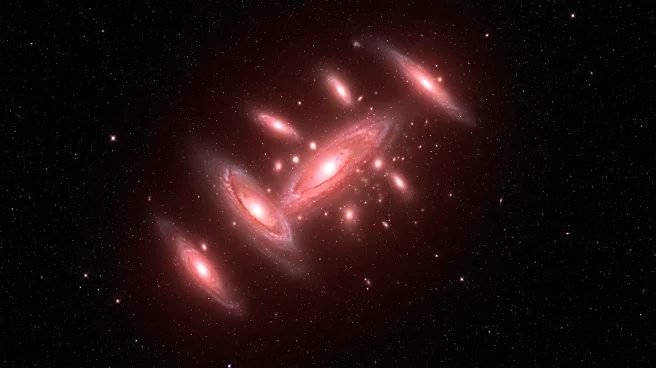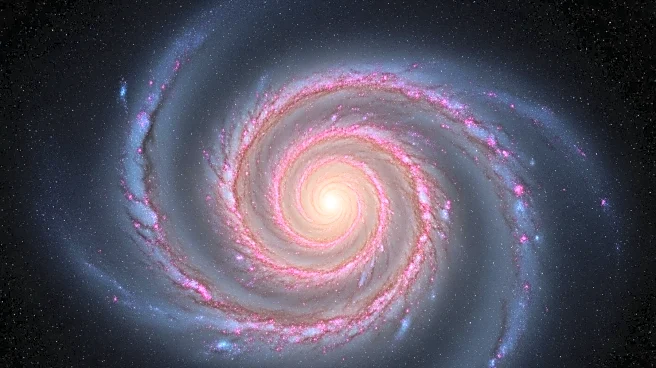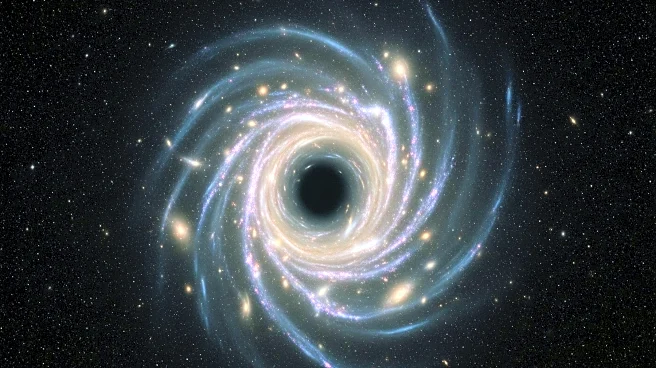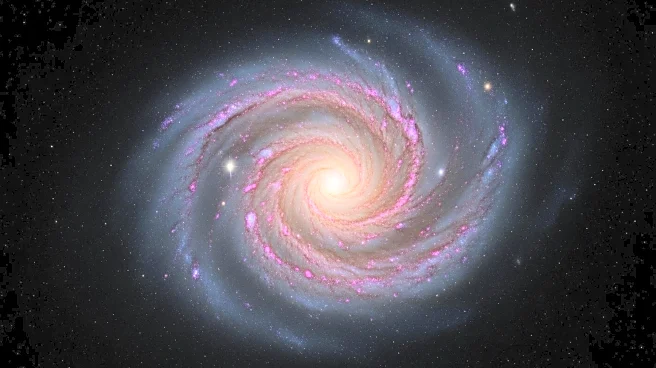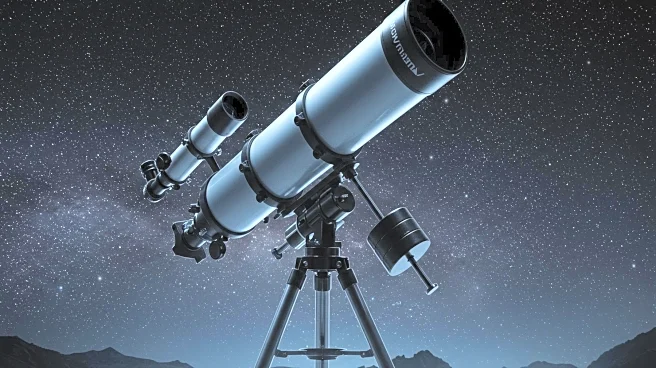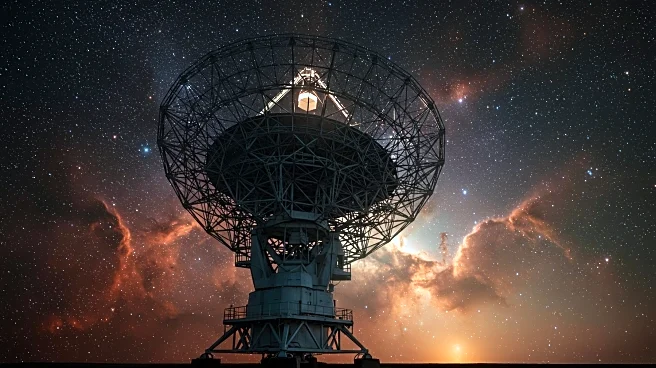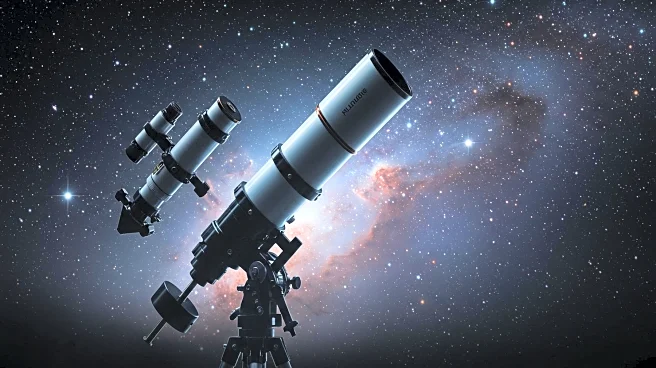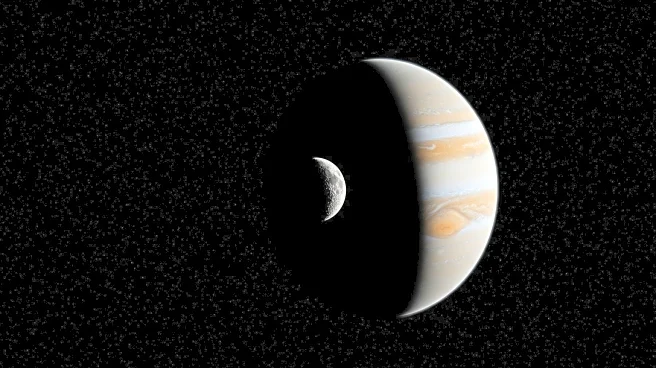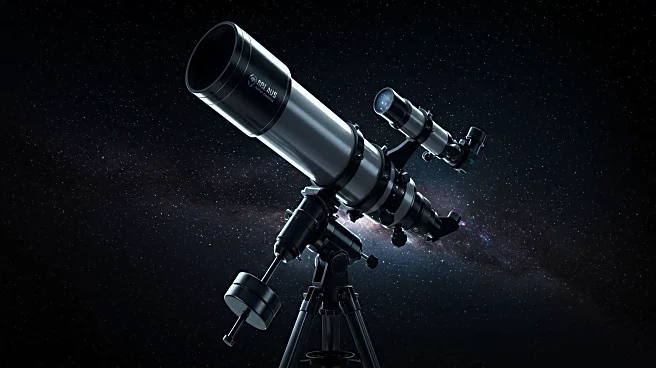What's Happening?
Recent observations using the James Webb Space Telescope's MIRI infrared camera have provided new insights into the formation of the first galaxies over 13 billion years ago. The study, published in Astronomy and Astrophysics, focuses on the Hubble Ultra Deep Field, a frequently observed area of the sky. The research team, led by Professor Göran Östlin from Stockholm University, utilized mid-wavelength infrared light and long exposure times to study extremely distant galaxies. These observations allow scientists to estimate the number of stars formed near the Big Bang and understand the evolution of the first galaxies.
Why It's Important?
The ability to observe galaxies in mid-infrared light offers a deeper understanding of the early universe's formation and evolution. This research provides valuable data on how stars and galaxies developed shortly after the Big Bang, contributing to the broader field of cosmology. The study also sheds light on the formation of heavier elements and the evolution of supermassive black holes, enhancing our knowledge of the universe's history and structure.
Beyond the Headlines
The availability of new images and data from this study allows researchers worldwide to further explore galaxy evolution and the formation of the first galaxies. The observations made in the Hubble Ultra Deep Field are expected to be used extensively in future research, offering a rich resource for astronomers studying the universe's early days.
